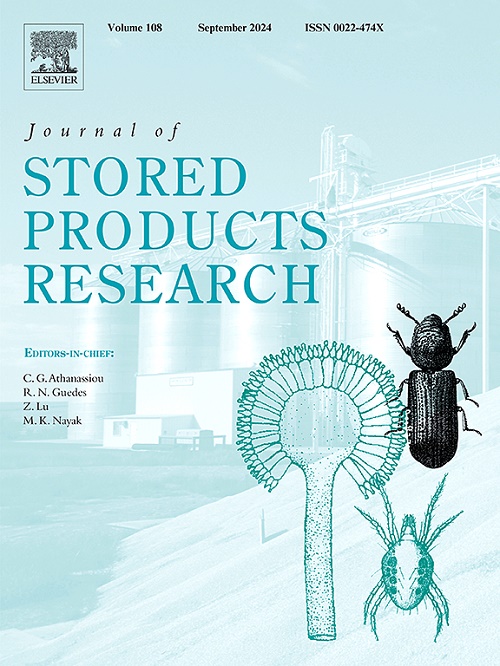Performance evaluation of improved indirect flat-plate solar collector drier with integrated phase change material for drying kiwifruit (Actinidia deliciosa A. chev.)
IF 2.7
2区 农林科学
Q1 ENTOMOLOGY
引用次数: 0
Abstract
This study presents an innovative approach to enhancing the drying process of kiwifruit (Actinidia deliciosa A. Chev.) by integrating a phase change material (PCM) into a flat-plate solar dryer (FPSDPCM). The research is motivated by the inefficiencies of conventional solar drying methods, which frequently result in prolonged drying times, inconsistent temperature control, and diminished product quality. The proposed system incorporates paraffin wax PCM and a flat-plate solar collector connected to a drying chamber with a 20 kg capacity. This design achieves a 10 ± 0.3% increase in thermal efficiency and a 38 ± 3.1% reduction in drying time compared to traditional solar dryers. The study's novelty lies in its innovative strategy to enhance drying performance while preserving the bioactive components of kiwifruit. Dried samples exhibited higher antioxidant activity, total phenolic content, and total flavonoid content compared to both fresh and open-sun-dried samples. Among five evaluated drying kinetic models, the Modified Henderson and Pabis model provided the most accurate predictions of the moisture ratio, as validated by statistical metrics including root mean square error (RMSE) and chi-square (X2) values. Operating within a temperature range of 44–73 °C, the FPSDPCM reduced the moisture content of kiwifruit from 93 ± 2% to 11 ± 0.5% in 5.5 h, compared to 8 h using open sun drying (OSD). Despite these advancements, limitations such as PCM selection and experimental uncertainty (32.83%) remain. Future research should focus on exploring alternative PCMs, real-time monitoring systems, and life-cycle assessments for broader agricultural applications. With an experimental uncertainty of 32.83%, the FPSDPCM offers a cost-effective, energy-efficient, and sustainable solution for small-scale farmers. It significantly improves drying efficiency and product quality, supporting environmentally sustainable agricultural practices.

求助全文
约1分钟内获得全文
求助全文
来源期刊
CiteScore
5.70
自引率
18.50%
发文量
112
审稿时长
45 days
期刊介绍:
The Journal of Stored Products Research provides an international medium for the publication of both reviews and original results from laboratory and field studies on the preservation and safety of stored products, notably food stocks, covering storage-related problems from the producer through the supply chain to the consumer. Stored products are characterised by having relatively low moisture content and include raw and semi-processed foods, animal feedstuffs, and a range of other durable items, including materials such as clothing or museum artefacts.

 求助内容:
求助内容: 应助结果提醒方式:
应助结果提醒方式:


